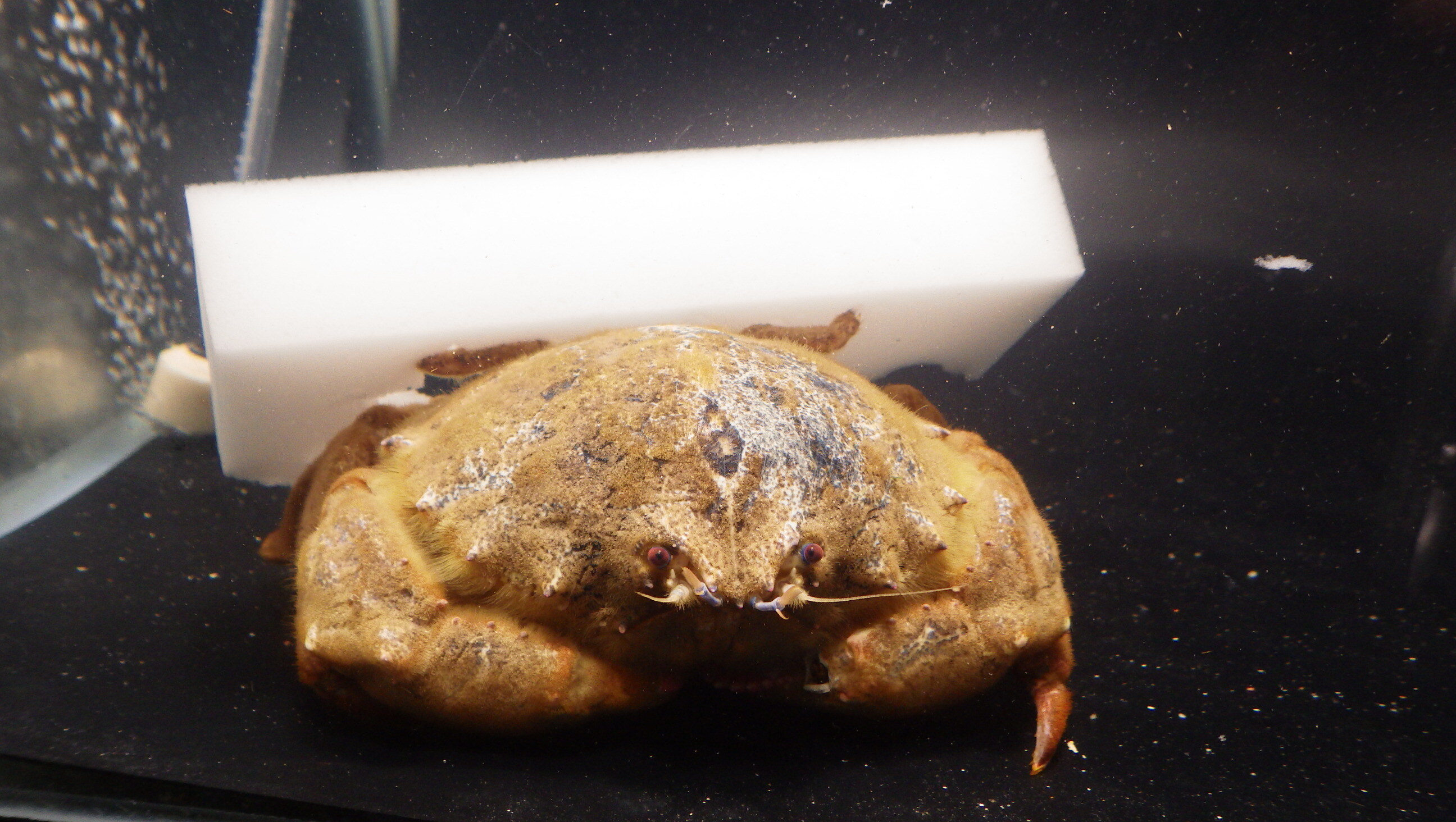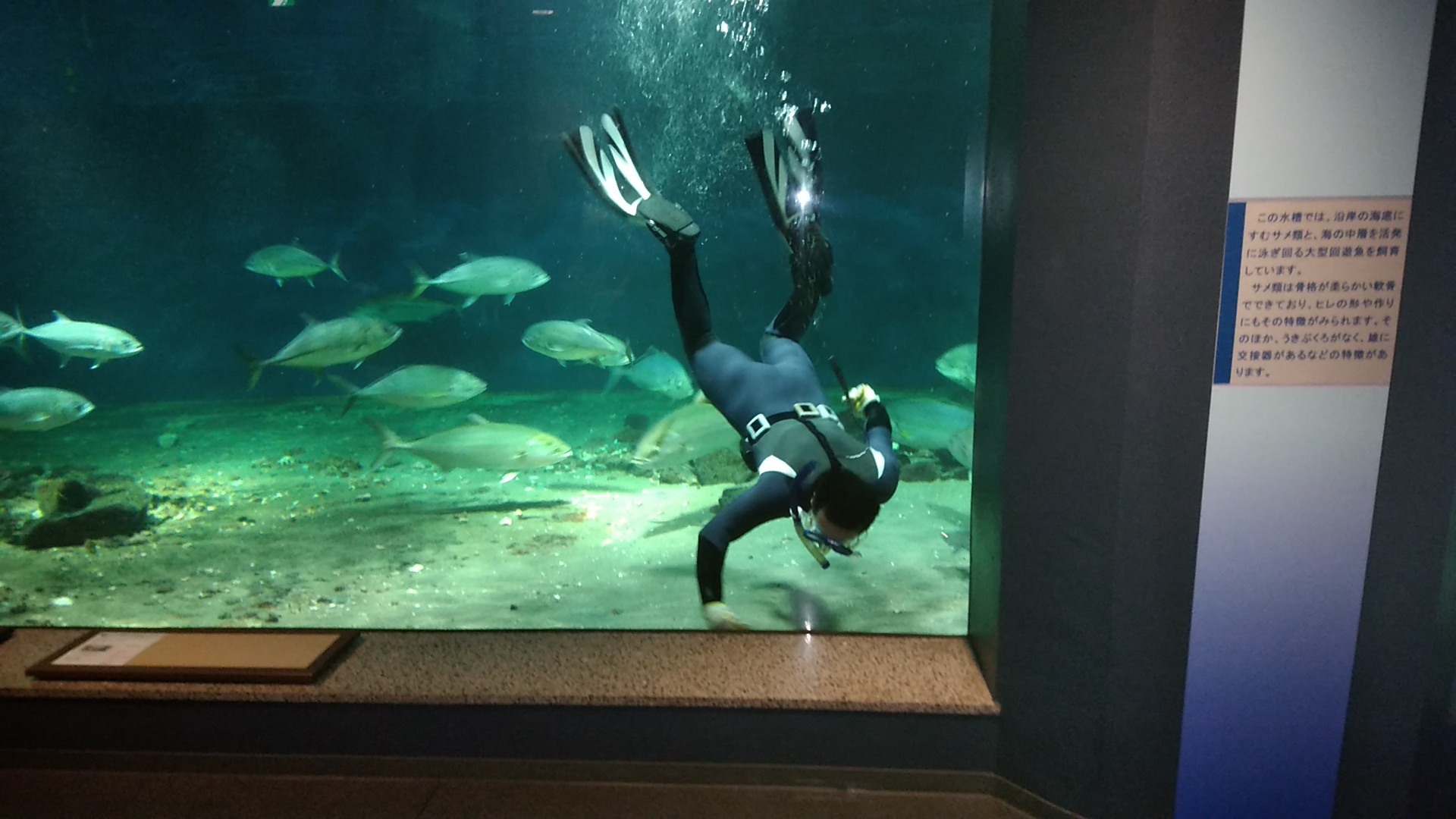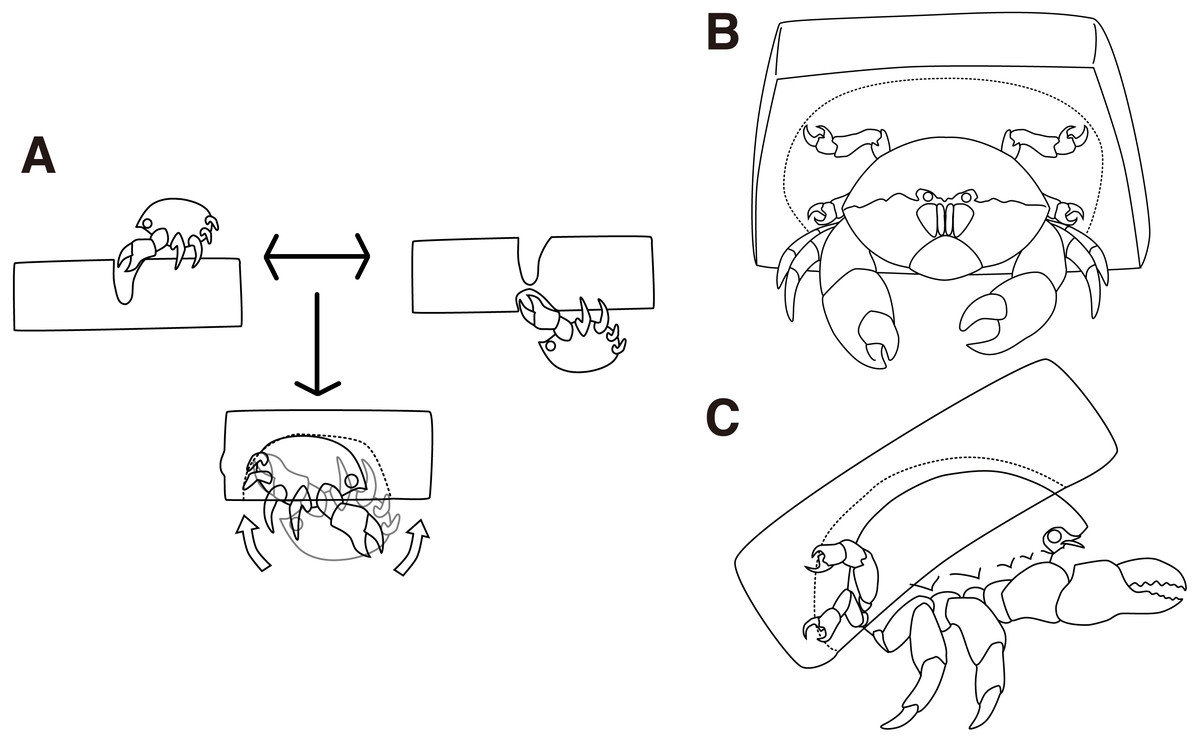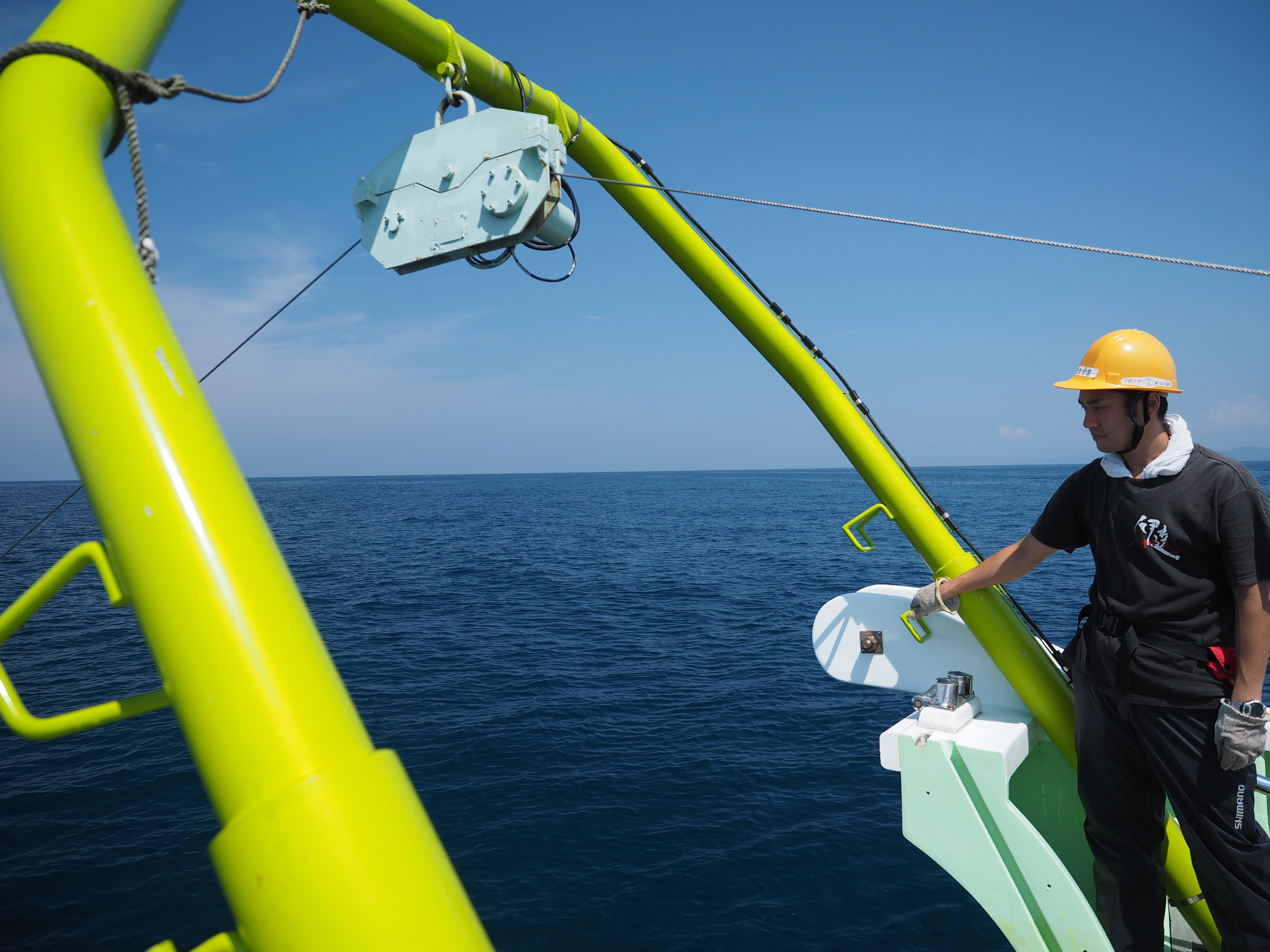
Luridromia dehaani carrying an artifical sponge
As part of PeerJ’s Author Interview Series we’re revisiting popular and impactful articles from the first half of the year to take a look inside the research process. One paper that sparked social comment back in May was a marine biology paper from researchers at Kyoto University and Tokyo Institute of Technology titled ‘Individual behavioral type captured by a Bayesian model comparison of cap making by sponge crabs’.
The editor and reviewers agreed that the research is significant as it introduces improved methods for statistical analysis to the broad field of behavioral ecology, and personality of aquatic life in particular. Here we talk to co-author Keita Harada about the research process and publishing with PeerJ.
Can you tell us a bit about yourself?

Keita Harada at work in Shirahama Aquarium
I work at the Shirahama Aquarium, at Kyoto University in Japan. This aquarium belongs to the Seto Marine Biological Laboratory, and staff mainly work on research and exhibitions about marine invertebrates of the local area. My main interest is in the behavior and ecology of marine crustacean. Lauridromia dehaani, which we used in this research, is one of them. My main business is collecting and exhibiting marine animals in the aquarium, but I also find time for research. One day, I saw that one L. dehaani carried artificial material, and thought: “Would the crab care about the material? Can they customize any material to make a cap for themself?” That was the start of this research.
Can you briefly explain the research you published in PeerJ?

Cap making and carrying behavior
I noticed that a few crabs carried caps that were too large for their body. So I hypothesized that some prefer larger caps, and others smaller caps, than would be expected from the body size. In other words, individual behavioral types would pertain to the cap making behavior. Therefore, we studied the correlation between the body size of crabs and the size of materials, caps and cavities. To do so, we formulated and evaluated statistical models including the assumption of individual behavioral type and those without the assumption. To measure the appropriateness of each model, we used the recently proposed and rigorously established statistical measure, Widely Applicable Information Criterion (WAIC). As a result, the body size of crabs correlated with the size of materials, caps and cavities. Moreover, the model assuming individual behavioral type was far more appropriate than those without, even if the body size correlation was conditioned out.
What kinds of lessons do you hope your readers take away from the research?

Dredge survey in Tanabe Bay
The generalized linear mixed models (GLMMs) have been widely recognized as an appropriate model to consider the grouped or clustered structure in data. However, ‘all models are wrong’; the inappropriateness has to be assessed by data. Our approach presented in the study is a natural way to evaluate a statistical model from the predictive point of view originally proposed by Dr. H. Akaike. Dr. S.Watanabe extended the view with a rigorous mathematical foundation. We used the widely-applicable information criterion (WAIC) which is an extension of the Akaike information criterion (AIC) for the Bayesian inference (Watanabe, 2010 J Mac Learn Res). We felt the framework was a great fit for our empirical problems of statistical analysis. The framework allowed us to quantitatively see the ‘animal personality’ in the sponge crabs. Another lesson obtained is about types of prediction. The marginal-level WAIC values were calculated in accordance with our focus of prediction. We would like to warn that we should be careful about what the statistical model infers. We described the difference of WAIC measuring the prediction error according to the different types of prediction so if readers could recognize the importance and the power of the approach, we would be grateful.
How did you first hear about PeerJ, and what persuaded you to submit to us?
My colleague published a paper in PeerJ. The openness and the web user interfaces to realize it, the smoothness of the communication with the editor and reviewers, prompted us to choose PeerJ. Also, the staff assisted us with any issues we had during the process. That was very helpful. We recommend PeerJ to our colleagues.
Thank you, Keita for sharing more about the research process in action! Read the full paper here
You can find more PeerJ author interviews here. View related research in PeerJ’s Aquatic Biology section here
